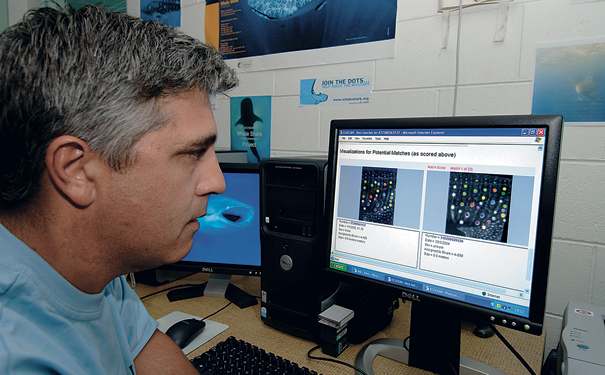
Brad Norman's Ecocean database. Image: Kurt Amsler/Rolex Awards
Whale sharks are classified as vulnerable on the International Union for Conservation of Nature Red List because of past unregulated harpooning in Taiwan, India and the Philippines. The animals are now protected in the latter two countries, and protective regulations are pending in Taiwan. But conservation is hampered by how little scientists understand about the animals. For instance, whale shark reproduction is a mystery.
They have never been seen mating because they spend most of their lives in waters too deep for observation. A rare insight surfaced in 1995, when a fisherman harpooned a pregnant female off the coast of Taiwan. Around 300 embryos of various sizes were found in her two uteruses, leading to suspicions that the species is ovoviviparous, meaning eggs hatch inside the female.
The team forms In 2002, while diving in the Red Sea off the coast of Djibouti in northeastern Africa, Jason Holmberg, a technical writer, also fell in love. “As we were about to leave, someone said “˜whale shark,’ so I dove back in,” he recalls.
The object of his affection was a two-and-a-half metre juvenile. He was particularly fascinated by the glowing spots on the shark’s skin. Holmberg wondered, like Norman had, if he could use the spots to identify individual fish.






